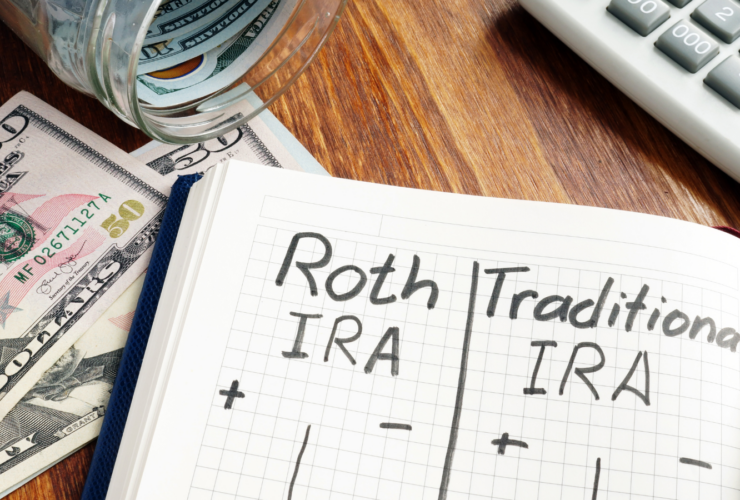Saving vs. Investing: Which is right for you?
Contrary to popular belief, there are many differences between saving and investing. Both are essential strategies for building a solid financial foundation but are utilized differently.
A solid financial plan consists of both saving and investing, but to succeed you need to know when it’s best to save and when it’s best to invest. Let’s take a closer look at the differences between saving and investing and which strategy is right for you.
What is saving?
Saving consists of putting away money for later use in a stable and secure place, like a bank account. It’s a low-risk, low-return option for when you need cash quickly because holding your money in cash is the most liquid form it can be in.
Saving is a smart financial strategy if:
- You need to build an emergency fund. Experts recommend having 3-6 months of living expenses saved for life’s unexpected moments. If your car breaks down or you suddenly fall ill, your emergency fund will be able to help get you through it. An emergency fund should cover all living expenses including rent, utilities, groceries, medications, etc.
- You have short-term goals. If you need funds today or within the next few months to accomplish a goal or set of goals, then keeping money in a savings account can be a good idea. Paying off debt or your yearly car insurance are reasons to have funds readily available.
Pros and cons of saving
The most significant advantage of saving and putting your money in a bank account is that it’s extremely low risk. When you put your money in a bank account, you know exactly how much interest you’ll receive and you typically don’t have to worry about any fees (and if there are fees, they’re pretty minimal).
Banks are also very liquid, meaning you can access your money at any time without issue.
On the other hand, bank accounts offer very low returns on savings accounts with the national average APY coming out to just .1%. Keep in mind that the national average lumps together regular savings and high-yield savings accounts. Banks like Chase or Wells Fargo offer a .01% APY. Returns are so low that you can typically earn 30x more by investing.
How to pick a good savings account
Not all savings accounts are created equal! As you research the right savings account for you, here are a few things you should look out for:
- High annual percentage yield: Savings accounts earn interest over time. High-interest savings accounts earn around 2%, while banks like Wells Fargo and Chase offer .01% APY for a regular savings account. Banks that offer high-interest savings accounts are typically online banks with no branches.
- Account fees: Low balance, annual or monthly maintenance, ATM withdrawals, and inactivity are all common fees to be aware of.
- Initial deposit: Most financial institutions require an initial deposit to create a savings account. The required initial deposit can be anywhere from $5-$100.
- Minimum balance requirements: Most savings accounts require a minimum balance of $300-$500 to be available in your account at all times. Look for an account that won’t penalize you if you drop below the minimum.
What is investing?
Investing is a growth vehicle for long-term goals like higher education or retirement. Some common investment types include stocks, bonds, real estate, and retirement accounts like 401ks and IRAs. There are also funds like mutual funds and exchange-traded funds that buy a combination of these assets.
Another popular form of investing is through alternative investments, like Hedgehog. An alternative investment is a financial asset that doesn’t fall into a conventional investment category like stocks, bonds, or cash. Some common types of alternative investments include:
- Private equity funds: Pooled investment vehicles where investors and funds directly invest in public and private companies or engage in buyouts of those companies
- Hedge funds: Private, actively managed investment pools
- Real estate investments: Home flips, renovations, multifamily investing, active farm property
- Tangible assets: Collectibles, precious metals, fine art
- Natural resources: Commodities, farmland, forests, etc.
Today, you, a professional, or even a robot can manage your investments. It’s an exciting time to invest!
Pros and cons of investing
The biggest difference between saving and investing is the level of risk, and different investments come with different levels of risk. For example, savings bonds are far less risky than stock market investments.
Market volatility is one of the main reasons people avoid investing altogether. Returns are not guaranteed, and it’s possible to lose a lot of money if the market takes a hit.
Remember, however, that higher-risk investments tend to generate higher returns. For example, hedge funds can generate 9-12% returns, which is much higher than a high-yield savings account’s 2% interest rate. However, with alternative investments like Hedgehog, your return is set in stone. Our unique model allows investors to make 12-20% interest each year.
Volatility and risk can be nerve-wracking, but remember that higher returns mean that you can reach your longer-term goals faster.
Investing is complex, so while you can manage it yourself, you’ll probably find the most success when working with a professional who understands your goals and how to reach them with the myriad of investments that are out there in the market.
Is it time to invest?
It can be tricky to find the perfect time to start investing. You should consider investing if:
- You’re eligible for a 401k match. You should always invest for retirement, but if your employer offers a 401k or other retirement savings vehicle and matches a certain percentage of your contributions, don’t let the opportunity go to waste. An employer match is essentially free money you can use to reach your retirement goals.
- You have an emergency fund. If you have 3-6 months of living expenses saved for emergencies, you should consider investing or further diversifying your portfolio.
- Your high-interest debt is paid off. The balance of student loans, mortgages, and credit cards can build up fast—especially if you are only paying the minimum payment.
- You have long-term goals. If you want to retire, you have long-term goals. Other long-term goals include saving for your child’s education or starting a business.
The bottom line: both saving and investing improve your financial well-being
At the end of the day, you need to save and invest to secure your financial well-being and meet your short and long-term goals.
In general, it’s essential to establish your savings and prioritize an emergency fund before you begin investing, but everyone’s financial journey is different. What works for you won’t be the right strategy for someone else.
If an alternative investment strategy fits your plan and goals, learn more about our model at Hedgehog Investments.
Disclaimer:
This material is intended for informational purposes only and should not be construed as legal or tax advice. Information here is not intended to replace the advice of your investment advisor or financial advisor. This information is not an offer or a solicitation to buy or sell securities. This information may have been compiled from third-party sources and is believed to be reliable. All investing involves risk, including the loss of principal.




